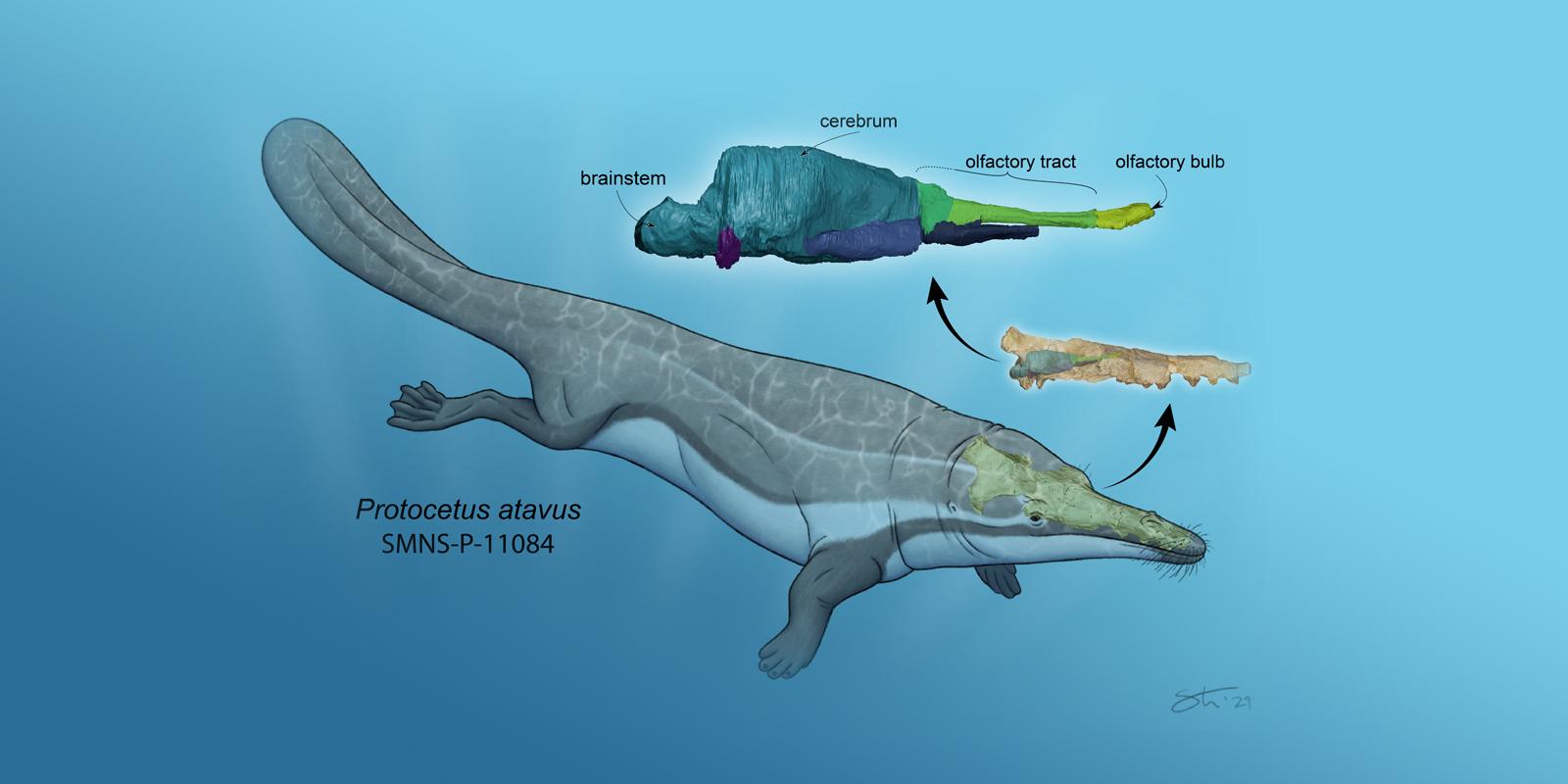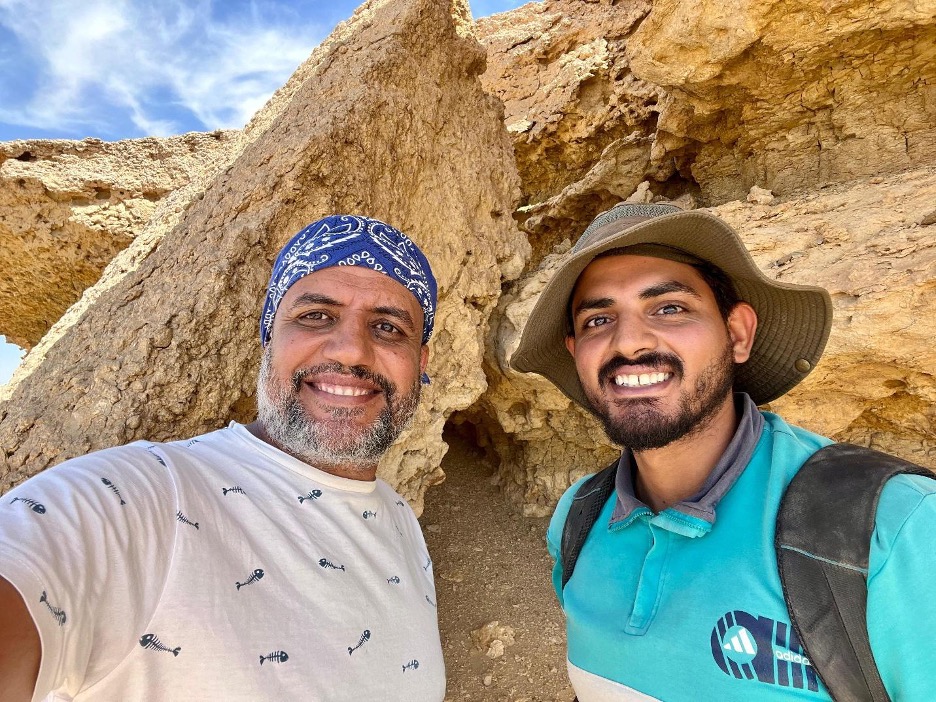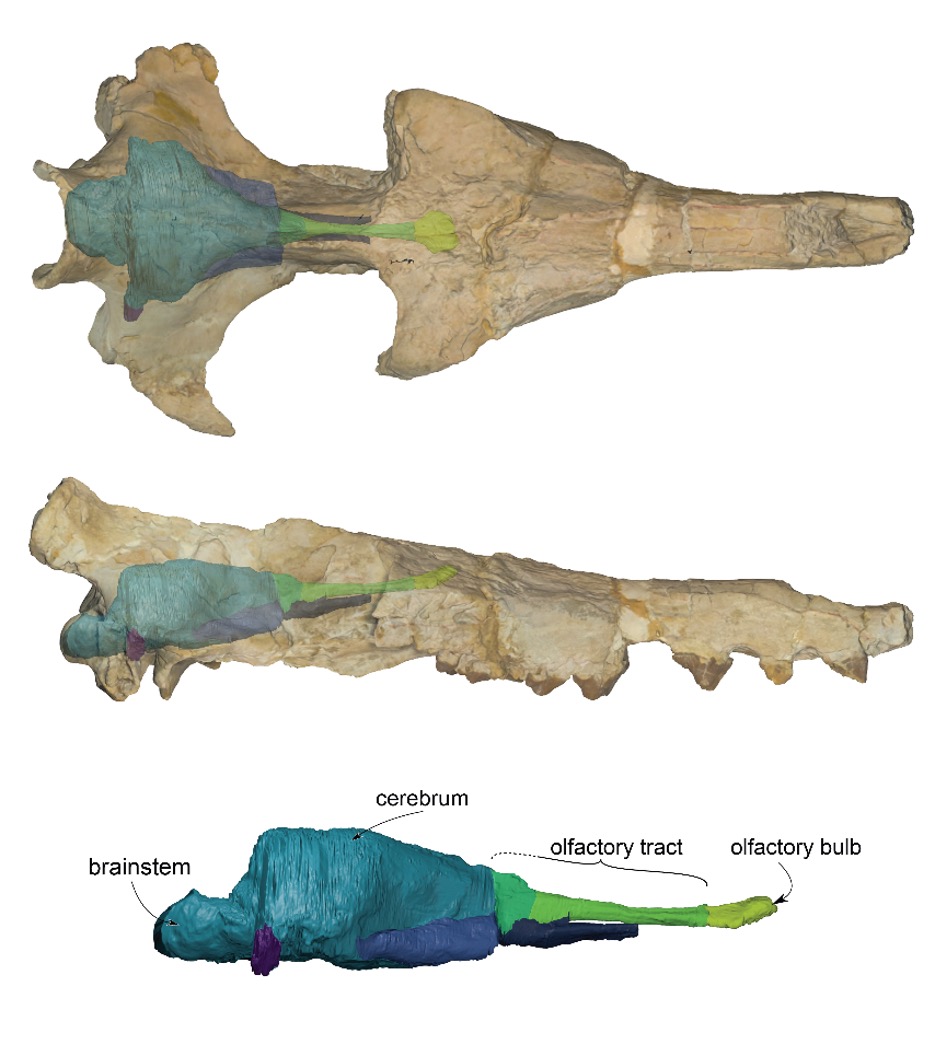
Faculty Takes Part in Landmark International Research Unraveling New Discoveries on Early Whales
Hesham Sallam, professor of vertebrate paleontology at AUC’s Institute of Global Health and Human Ecology, is the co-author of a recently published study that marks the first documentation of the internal anatomy of amphibious whales that lived more than 40 million years ago. The study not only reveals new findings on the evolution of the brain size and sensory systems of early whales, but it also challenges the long-standing assumption that complex brain development in whales occurred only after their full transition from land to aquatic organisms.
Conducted by an international team of scientists from Egypt, Germany, Italy and the United States, the study provides insights into one of the most significant periods in the history of mammals — the transition of whales from land to sea. As the authors put it, the study represents “a remarkable leap forward” in our modern-day understanding of the early stages of whale neurological development.
“Egyptian fossils remain a gold mine for understanding major evolutionary transitions, such as the development of whales.”
Using high-resolution computed imagery to examine the skull anatomy of whale fossils from Egypt’s Sahara Desert, the scientists have shown that the ancestors of modern whales developed larger brains than was previously thought while maintaining their land-based sense of smell, even after becoming semiaquatic.
“Thanks to modern technology, we can now detect features in fossil whales that were previously beyond our reach,” said Sallam.
The research is based on CT scans of two well-preserved fossil skulls unearthed from Egypt’s Sahara Desert, representing two species of early whales: Protocetus atavus, which lived approximately 43 million years ago, and Aegyptocetus tarfa, dating back to around 41 million years ago. Both belong to Protocetidae, a family of four-legged, mostly semiaquatic whales that are now extinct. The skull of Protocetus was originally excavated from Egypt over a century ago and is preserved in the collection of the Stuttgart State Museum of Natural History. “Egyptian fossils remain a gold mine for understanding major evolutionary transitions, such as the development of whales,” said Sallam.
The research team digitally reconstructed the internal anatomy of the skulls, enabling the first detailed view of both the cavity and olfactory (smell-processing) regions in the brains of these ancient whales. “Studying the brain anatomy of these ancient whales offers us a unique window into the historic moment when whales began to cognitively diverge from life on land while still retaining their ancestral sensory ties to it,” said Sallam.
The results showed that Protocetus had a relatively large brain compared to other whales of its time, revealing that brain enlargement in whales occurred prior to what has been historically documented. In addition, both Protocetus and Aegyptocetus had well-developed olfactory structures, indicating that early whales preserved their sense of smell inherited from their ancestors who lived on land. This represents a stark difference from modern-toothed whales (odontocetes), in which the sense of smell is nonexistent, and baleen whales (mysticetes), where it is significantly reduced.
“Studying the brain anatomy of these ancient whales offers us a unique window into the historic moment when whales began to cognitively diverge from life on land while still retaining their ancestral sensory ties to it.”
To interpret these findings, the researchers used a broad comparative framework that included a large dataset of contemporary and extinct mammals — both terrestrial and aquatic — to assess how brain size and olfactory structures in Protocetus fit into larger evolutionary patterns for mammals. Their observations reinforced the notion that cognitive and sensory changes in whales began well before they fully transitioned from land to aquatic organisms.
“These whales exhibited a blend of adaptations that underscored their aquatic abilities but also retained ties to the land,” the authors noted. Their anatomy shows that they were still capable of navigating both environments. For instance, early whales could detect airborne cues while on land, an ability that was probably important for reproductive or social behavior. However, this sense of smell would not have been beneficial underwater, as Protocetus and Aegyptocetus would have held their breath beneath the surface, making their sense of smell inactive.
The study emphasizes the importance of modern imaging techniques in helping scientists analyze fossil collections, leading to transformative discoveries. “Our findings reshape the narrative about whale evolution,” said Abdullah Gohar, co-author of the study, a PhD student at the Oklahoma State University Center for Health Sciences and a member of the Sallam Lab.

AUC Professor Hesham Sallam and Abdullah Gohar, a PhD student at the Oklahoma State University Center for Health Sciences, are the two co-authors from Egypt

3D reconstruction of the brain endocast and olfactory tracts and bulbs of the early whale Protocetus atavus, digitally segmented from high-resolution CT scans. Top and middle: endocast within the skull in dorsal and lateral views. Bottom: isolated endocast showing the relative development of the brain and olfactory structures; Photos by Eli Amson, State Museum of Natural History Stuttgart
